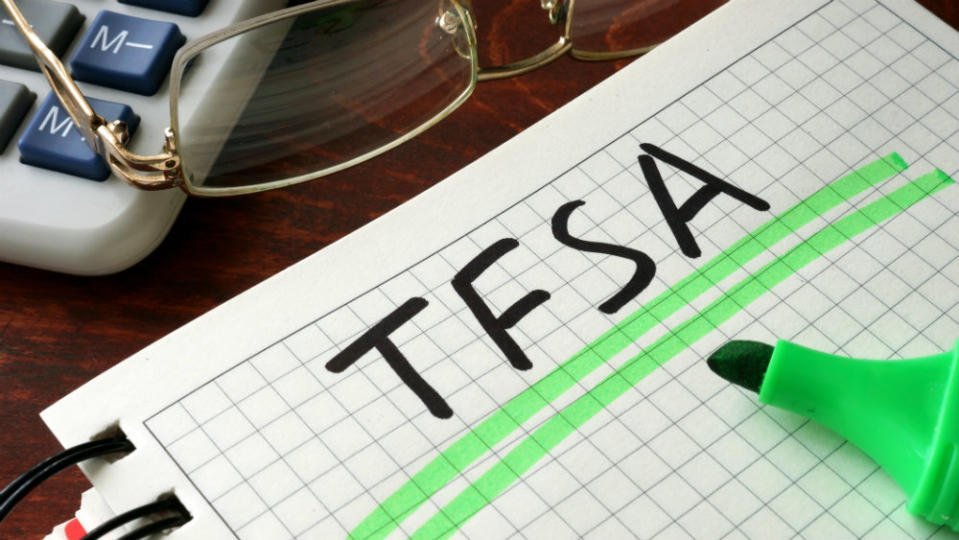TFSA Investors: Where to Invest $6,500 This Year

Written by Kay Ng at The Motley Fool Canada
There’s a general negative sentiment in investing right now. The Bank of Canada’s rapid rising interest rates since 2022 to curb inflation put many businesses and individuals off guard. If you’re at a loss on where to invest your Tax-Free Savings Account (TFSA) money, you can consider parking your hard-earned savings in Guaranteed Investment Certificates (GICs), which guarantee your principal back at maturity.
GIC to keep your principal safe
Traditional GICs offer interest income. The best one-year GIC rate is about 5.75% right now. Furthermore, interest income is taxed at your marginal tax rate in non-registered accounts. This is one reason investors would earn interest income in their TFSAs.
You can also consider market-linked GICs, which also guarantee the safety of your principal, but you could potentially get a higher return in the stock market if the stock market does well. Essentially, you get a percentage of the stock market upside.
Other investors argue that they want to make the most money possible in their TFSA tax-free. And they are willing to take higher risks to do so. In that case, they might consider bonds or stocks. To be sure, bonds and stocks are more complicated investments than GICs.
Bonds
Oftentimes, bonds are bought for fixed-income generation. Investors should note that bonds have different lengths of maturity. Under a normal yield curve, the longer the maturity, the higher the yield. However, today, we’re experiencing abnormality — an inverted yield curve where shorter-term bonds have higher yields than longer-term bonds.
Typically, the longer the maturity of a bond, the more sensitive it is to the change in interest rates. Bonds and interest rates have an inverse relationship. So, as interest rates rise, bond prices fall and vice versa. Investors who are considering investing in bonds can do so with more diversification via bond exchange-traded funds (ETFs), such as iShares Core Canadian Corporate Bond Index ETF, which provides exposure to Canadian investment-grade corporate bonds with maturities of at least one year and up to +20 years.
A stock idea for your TFSA
Let’s be reminded that long-term stock returns are driven by the underlying business performance. Of course, the valuation you pay for the stock also matters. It follows that the first item on the checklist is to ensure you’re considering solid businesses.
Here is a stock (i.e., business) that even new investors can explore and potentially start investing in. You can buy stocks such as Fortis (TSX:FTS), which provide a good balance of income, stability, and growth.
The regulated electric and gas utility earns predictable returns on its investments. Additionally, it primarily owns distribution and transmission assets that provide essential services through the economic cycle. Even when the economy is doing poorly, there would be little negative impact on its earnings.
Surely, this is a key reason it has been increasing its dividend by half a century without any interruption! Of course, the utility also maintains a sustainable payout ratio that is estimated to be approximately 74% of its adjusted earnings this year.
At $55.53 per share at writing, the dividend stock offers a dividend yield of 4.25%. Through 2028, Fortis stock plans to increase its dividend by 4-6% per year, with the support of rate base growth of about 6.3%. The defensive stock appears to be fairly valued in the current environment. So, interested investors can consider buying on weakness.
The post TFSA Investors: Where to Invest $6,500 This Year appeared first on The Motley Fool Canada.
Should You Invest $1,000 In Fortis?
Before you consider Fortis, you'll want to hear this.
Our market-beating analyst team just revealed what they believe are the 5 best stocks for investors to buy in October 2023... and Fortis wasn't on the list.
The online investing service they've run for nearly a decade, Motley Fool Stock Advisor Canada, is beating the TSX by 25 percentage points. And right now, they think there are 5 stocks that are better buys.
See the 5 Stocks * Returns as of 10/10/23
More reading
Fool contributor Kay Ng has positions in Fortis. The Motley Fool recommends Fortis. The Motley Fool has a disclosure policy.
2023

 Yahoo Finance
Yahoo Finance 